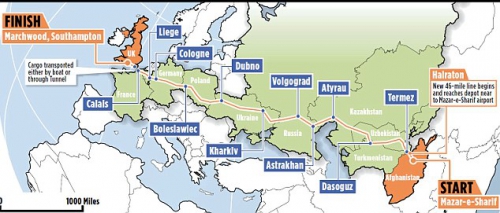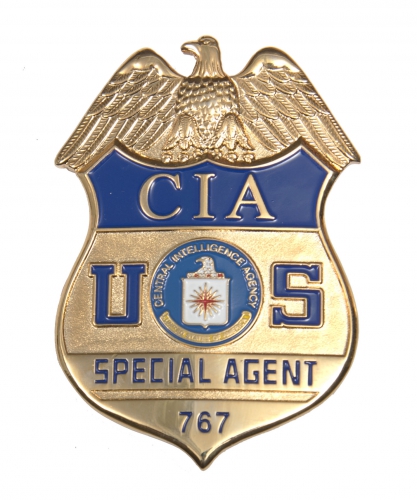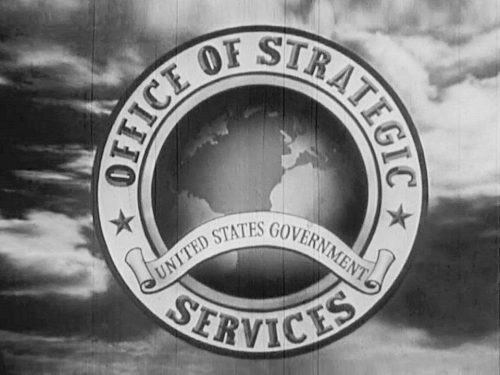Ex: http://journal-neo.org
Recent developments around the world concerning the seemingly unrelated topics of railways, heroin production, and international terrorism point toward emerging realities about the global economy.
On April 4, 2016, the 48th anniversary of the assassination of Dr. Martin Luther King Jr., an Amtrak Train derailed in western Pennsylvania. Two Amtrak workers were killed. Accidents on Amtrak and other systems of United States public transportation are becoming much more common. Just a few weeks before, the DC Metro, the second-largest subway system in the country, closed down for an entire day for urgent safety repairs. In January, someone died when a DC metro station filled up with smoke.
Every day, Amtrak train passengers in the United States are transported over a 106-year-old bridge in Hackensack, New Jersey. () It’s widely acknowledged that the decaying railway bridge needs to be repaired, but the funds simply cannot be put together. The plan to replace the bridge was abandoned in 2014 when the funds raised for the project came up $900 million short.
As the US public transportation system decays, it is still highly useful to individuals who support themselves with a certain illicit profession — narcotics trafficking. According to City Lab, train and bus stops are the ideal spot for those transporting cocaine, crystal meth, or the drug which is causing an epidemic throughout the United States: heroin.
The Global Heroin Problem
Every day 78, people in the United States die from heroin overdoses. Heroin use gradually increased in the first decade of the 21st century. By 2012, the rate of heroin-related deaths was four times what it was in 2002. Between 2012 and 2013, the number of deaths skyrocketed by 39%. Heroin addiction is rising all across the United States, and poppy fields are sprouting up across Mexico to meet the demand.
Currently, just over fifty percent of US heroin originates in Mexico. The rest of the heroin can be traced to the country where 90% of the world’s heroin is produced: Afghanistan.
The first poppy fields intended for opium production sprouted in Afghanistan when it was under British economic domination during the 1870s. Heroin sprouted up in many different parts of the world — accompanying the slaughter of indigenous peoples, the singing of “God Save the Queen,” and the institution of public floggings — as a kind of trademark of British imperialism.
Heroin production was a very small factor in Afghanistan until 1979. Following the seizure of power by the pro-Soviet People’s Democratic Party, the US Central Intelligence Agency began cooperating with Gulbuddin Hekmatyar. Hekmatyar was the top drug lord in Afghanistan, and with the help of the CIA and the Saudi monarchy, poppy fields sprouted up everywhere. As Sunni takfiri extremists from around the world went to Afghanistan to fight against the People’s Democratic Party, the booming heroin industry of Afghanistan was utilized to fund the operations. The Pakistani secret police, cooperating with the CIA and the Saudis, escorted trucks full of heroin across the Afghan-Pakistan border.
The Taliban government that came to power in Afghanistan during the 1990s saw the drug as a violation of Islamic teachings and thus worked to wipe out heroin production. According to the United Nations, the crackdown on heroin in Afghanistan had decreased production “from 3,300 tons in 2000 to 185 tons in 2001.”
After the US invasion following the September 11 attacks, heroin production in Afghanistan dramatically increased. Since 2001, heroin production in Afghanistan has risen to astoundingly high levels. No country in history has ever produced as much heroin as Afghanistan currently does, accounting for 90% of all world production.

The “Trade and Transport” Plan
Heroin production has been key in strengthening another problem in Afghanistan — terrorism. Since 2001, US leaders have been fighting a “War on Terror.” The goal is to wipe out “terrorism.” However, in each of the countries invaded by the United States since the “War on Terror” began, terrorist organizations have gotten stronger.
Sunni takfiri terrorist groups like ISIS and Al-Nusra had virtually no presence when the secular Baath Arab Socialist Party controlled Saddam Hussein’s Iraq. Now extremists, including ISIS and Al-Qaeda, are very prevalent in the country. ISIS has set up shop in Libya since the overthrow of Gaddafi. Years of drone strikes have clearly not created stability in Yemen.
In Afghanistan, heroin dealing has been a key factor in subsidizing a terrorist organization called “Jundallah” which conducts kidnappings, bombings, and other terrorist activities. Jundallah are Saudi-funded terrorists based in Afghanistan who seek to overthrow the Islamic Republic of Iran, whose clerics they deem to be “Shia Apostates.” They appear to have received assistance from the United States, Britain, and various pro-western regimes in the region.
While Iran has graciously hosted over 2 million refugees since 2001, Jundallah and other anti-Iranian terrorists based in Afghanistan have arranged for heroin to be routinely smuggled across the borders. Heroin addiction is currently a huge problem in Iranian society.
When addressing the United Nations Security Council about the problems of Afghanistan on June 22, 2015, Iranian deputy ambassador Hossein Deghani explained Iran’s plan to aid the country. He said: “In the view of the Iranian government, trade and transport are two main fields for expansion of Tehran-Kabul relations.” He highlighted the fact that Afghanistan is a landlocked country, and that this has limited its ability to export. He talked of the project for the construction of a railroad from China, through Central Asia and Afghanistan, to Iran.
On February 16, the first train to travel from China to Iran successfully arrived. The train was constructed utilizing the most recent innovations in transportation technology, and completed the journey of 5,900 miles in just 14 days. A sea voyage between the two countries takes 30 days longer, at minimum.
China’s 13th Five-Year Plan includes connecting Afghanistan with the emerging Central Asian Rail System. Trains would travel from China’s city of Kashgar to the Afghan city of Herat, and then connect to Iran after crossing Kyrgyzstan and Tajikistan. Access to Iran’s various seaports would ensure that Afghanistan could begin exporting at a much higher rate.
Currently, China’s government-controlled banks are funding railroad projects in 30 different countries. In 2013, China exported $3.23 billion in railroad equipment.
Afghanistan is not a wealthy country. The CIA World Factbook describes it as arguably the most impoverished country in the world. It has no oil deposits. The once-vast timber resources of Afghanistan were nearly eradicated by the British Empire, and the reforestation efforts of the 1980s were abandoned when the People’s Democratic Party was overthrown. Though Afghanistan has almost nothing to offer the People’s Republic of China, the central banks are willingly investing billions into putting a railroad through this deeply impoverished country. Chinese banks are funding the project, even as growth in the Chinese economy is notably slowing.
Stability for Central Asia: Why Invest in Afghanistan?
How is it possible that projects for building new, modern railroads in impoverished Afghanistan can be financed, while financing is unavailable to replace a 106-year-old railway bridge in the richest country on earth? Why do Chinese banks invest in the most impoverished, drug-infested, and war-torn country in the world — while US banks are unwilling to invest in highly developed and industrialized Hackensack, New Jersey?
The answer can be found in simplistic phrases used by Mao Zedong, the founder of the People’s Republic. US banks operate as capitalist institutions, where, as Mao put it, “profits are in command.” Banks in the United States lend money in order to make a return on their investment. With the huge rate of public debt amid the shrinking US economy, lending money to replace a dangerous bridge in New Jersey — or to the federal government to beef up the Amtrak system, or to the District of Columbia in order to fix up the DC Metro — is not a smart business move. As the wages of US workers go down, and tax revenue shrinks, “debt crises” are plaguing the western world. During the Great Depression of the 1930s, the US government’s slogan was “give a man a job.” During the depression of the 21st Century, the rallying cry is “austerity.” Government workers are being laid off and public services like food stamps, libraries, and fire departments are being cut. It is clearly not a good time to lend money to the US government.
It’s not a good time to lend money to the Afghan government either. The country is arguably worse off than it has ever been before, but the major banks in China operate under a different principal. The government-owned banks in China operate with “politics in command,” to use Mao’s phraseology.
The decision to build and improve railroads in Afghanistan, as well as Indonesia, Thailand, Africa, Eastern Europe, and elsewhere is not a financial decision for China’s banks. It is a political one. The trains that China is constructing all over the world are part of the “One Belt, One Road” policy, and fit into the overall global vision of Chinese President Xi Jinping. Xi has become well-loved throughout the impoverished countries for his plan to build a “New Silk Road.”
Xi Jinping argues that it is in China’s interest to see people around the world lifted out of poverty. According to Xi, one key to eliminating poverty is the construction of infrastructure. The rhetoric of the Chinese Communist Party on the global stage presents a vision of peace, where countries do not go to war with one another, because they are economically bound together.
In the case of Central Asia, China has a real self-interest in stabilization. The drug-dealing terrorists and extremists of Afghanistan, unleashed and empowered by the US invasion, have recently found their way into China. The recent wave of mass stabbings conducted by extremist groups among China’s Islamic Uyghur minority have not arisen spontaneously. Money from Saudi Arabia and training from the western-backed insurgents fighting against the Syrian government has been used to fund anticommunist takfiris in China’s Islamic regions. Many Chinese people fear that the horrors unleashed in places like Paris and Brussels could eventually happen in Chinese cities if conditions in Afghanistan are not improved.
Stability in Afghanistan means jobs, economic opportunities, and a means of survival beyond heroin trafficking and extremism for the impoverished Afghan people. Working in the interests of Chinese society, not the profits of a few capitalists, Chinese banks are funding infrastructure projects in Central Asia. These banks are not obeying stockholders. They are obeying the Communist Party, which has 86 million members who are trained in Marxist-Leninist ideology, Mao Zedong Thought, and Deng Xiaoping Theory.
The foreign policy goals of the Chinese government, under the leadership of Xi Jinping — who in the US press is widely decried as a “hardliner” and compared to Joseph Stalin — has been to stabilize the world by providing economic opportunity to imperiled regions. If people are not starving and desperate, the world will be a much safer place, not just for China, but for all countries.
Wall Street Bankers: The New Opium Warriors
Who gains from instability? What forces could possibly view as beneficial, economically or otherwise, the rise of terrorist groups like ISIS? Unfortunately, the answer is global monopoly capitalism, headquartered on Wall Street and the London Stock Exchange.
The regimes targeted and deposed by the US “War on Terror” have all been sources of stability and economic independence. The Taliban was wiping out the drug trade, and planning to build oil pipelines. Saddam Hussein’s Iraq had an independent, state-run oil company that was exporting petroleum on the world markets, as did Gaddafi’s Libya. Prior to western efforts to foment civil war, Syria was one of the most stable countries in the Middle East, with religious diversity and a high-quality healthcare and educational system.
Though people in western countries continue to live in fear of terrorist attacks, and a crisis of mass migration is causing political turmoil in Europe, the leaders of western government continue to foment chaos in Syria. Each day, as US leaders work to overthrow the Syrian Arab Republic, ISIS and Al-Qaeda get stronger. Iran and Russia, two countries who have made gigantic efforts to fight against ISIS in Syria, are targeted by economic sanctions from the United States.
Economic development does not only mean alleviating poverty and reducing terrorism. It also means eliminating the monopoly of the west. If countries can remain impoverished and war-torn, Wall Street and London can remain at the center of the world economy, and everyone will be forced to purchase from them. Economic development around the world means western corporations will face new competitors.
In two infamous “Opium Wars,” the British Empire forced China to accept the domination of foreign corporations. The official reason for the war was objections to Chinese tariffs and protection of domestic businesses. The wars were known as the “Opium Wars” because they ensured that Britain could import narcotics, which were key in impoverishing China.
The first time the US military intervened in China was to put down the Boxer Rebellion. In 1899, Chinese nationalists called “Boxers” began to attack symbols of Christianity, which they saw as a foreign religion imposed on the country by western capitalism. They also confiscated opium pipes and lynched drug dealers. The United States Marine Corps was dispatched in order to ensure that the Boxer Nationalist Movement was not successful, and that China remained “the sick man of Asia” as it was widely known at the time.
However, China is no longer the “sick man of Asia.” In 1949, it had a revolution and the Communist Party came to power. China soon seized control of its own natural resources, and began to develop its industries with a planned economy. Prior to 1949, China had no steel industry. Today, more than 50% of the world’s steel is produced in China’s government-owned steel industry. The standard of living inside China has risen drastically in what the Communist Party describes as the “Great Revival” of China to its role as a global superpower.
The New Silk Road Vision and the “One Belt, One Road” policy applies the lessons China learned over the course of the 20th century. China’s billions of people have learned that the hope for reducing poverty, drug addiction and other societal ills is with central planning, infrastructure, and public control over the economy.
The United States at this time could serve as a case study in the tragic results of “profits in command.” Crime rises, civil liberties are stripped away, and police routinely kill innocent civilians as corporations make money from “prisons for profit.” The US military is all over the world functioning as part of a “military industrial complex” that stimulates Wall Street. Culture is in decline as Hollywood and television drop to vulgarly low levels. Reality TV shows and superhero action films, pornography and other guaranteed money-makers are everywhere as enlightened artistic expression is rare. Homelessness rises as millions of houses sit empty. Hunger rises amid agricultural surplus. The irrationality of a profit-run economy is on full display as the entire society spirals into a low-wage police state. The fact that media circus clown Donald Trump espouses racism and promotes violence doesn’t prevent him from being a serious contender in the presidential election.
With our transit systems in decay and heroin addiction rising, perhaps it is time for the United States to start learning from China’s alternative vision.






 del.icio.us
del.icio.us
 Digg
Digg

 This week, SU-24 fighter-bombers buzzed a U.S. destroyer in the Baltic Sea. The Russian planes carried no missiles or bombs.
This week, SU-24 fighter-bombers buzzed a U.S. destroyer in the Baltic Sea. The Russian planes carried no missiles or bombs.